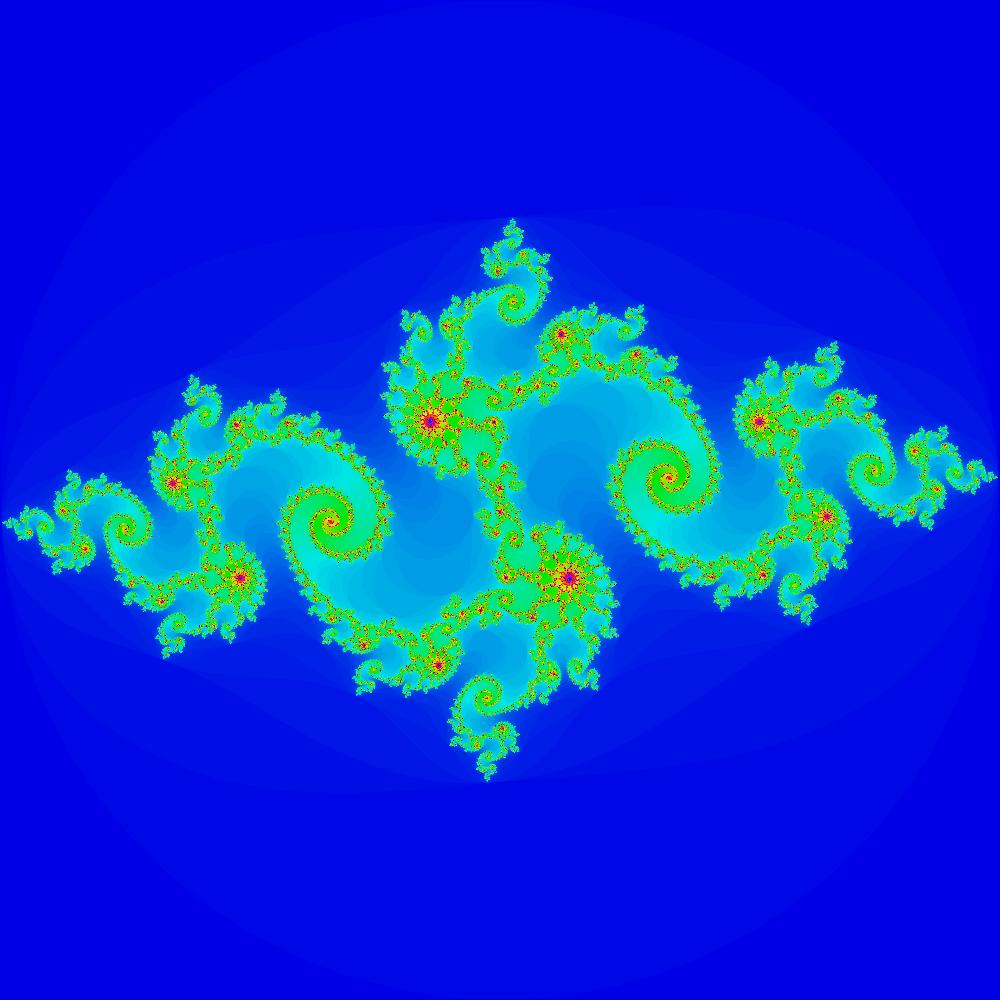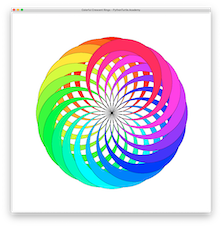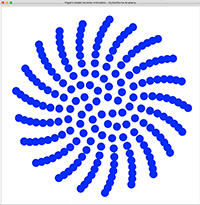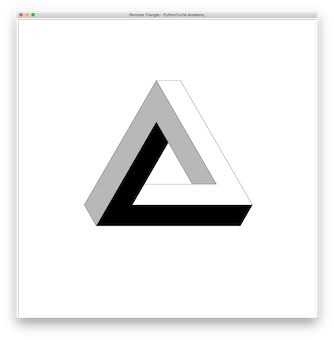In this project, we are going to animate the Julia Set by varying the constant c in the normal Julia Set function. Turtle will be too slow to do this work. Instead we are going to use the PIL library to generate 360 images. Then, a video editing software can be used to combine 360 images into a video file. The following is the source code:
from PIL import Image
import colorsys
import math
cx = 0.7885
cy = 0
R = (1+(1+4*(cx**2+cy**2)**0.5)**0.5)/2+0.001
max_iteration = 200
w, h, zoom = 1000,1000,1
def julia(cx,cy,R,max_iteration,x,y,minx,maxx,miny,maxy):
zx = (x-minx)/(maxx-minx)*2*R-R
zy = (y-miny)/(maxy-miny)*2*R-R
i=0
while zx**2 + zy**2 < R**2 and i < max_iteration:
temp = zx**2 - zy**2
zy = 2*zx*zy + cy
zx = temp + cx
i += 1
return i
def gen_julia_image(sequence,cx,cy):
bitmap = Image.new("RGB", (w, h), "white")
pix = bitmap.load()
for x in range(w):
for y in range(h):
c=julia(cx,cy,R,max_iteration,x,y,0,w-1,0,h-1)
r,g,b = colorsys.hsv_to_rgb(c/max_iteration,1,0.9)
r = min(255,round(r*255))
g = min(255,round(g*255))
b = min(255,round(b*255))
pix[x,y] = int(b) + (int(g) << 8) + (int(r) << 16)
bitmap.save("julia_"+str(sequence)+".jpg")
for i in range(360):
cx = 0.7885*math.cos(i*math.pi/180)
cy = 0.7885*math.sin(i*math.pi/180)
gen_julia_image(i,cx,cy)




